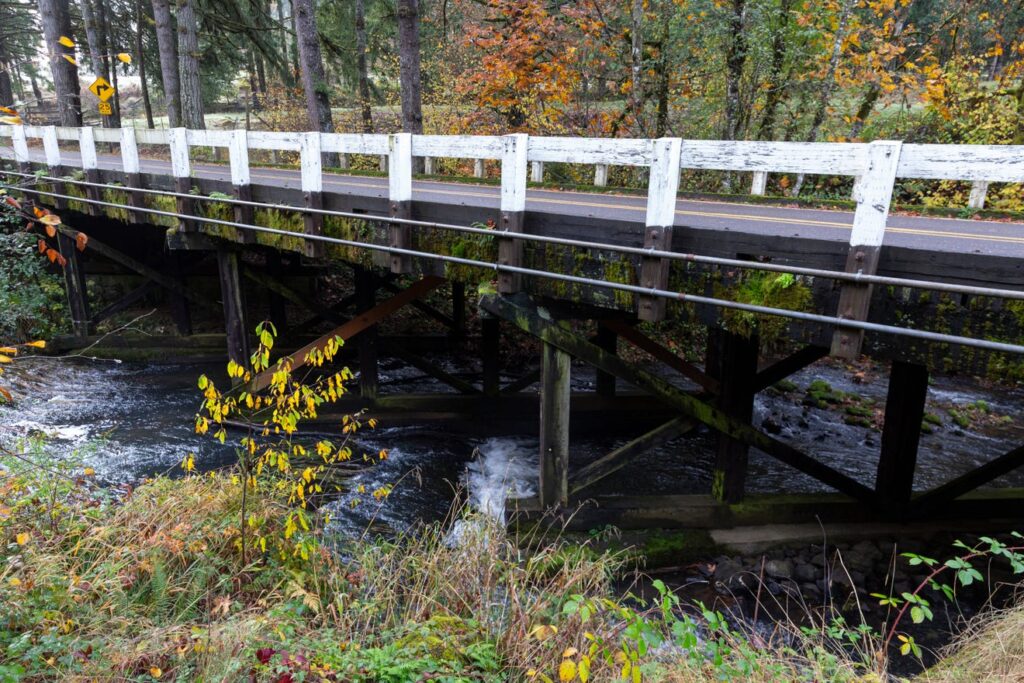By Bill Poehler | Aug. 12, 2025 | Salem Statesman Journal
The Oregon Supreme Court remanded the Oregon Water Resources Commission’s denial of water rights by the East Valley Water District.
The Oregon Water Resources Commission must reconsider its denial of a proposed dam in farmland south of Silverton, the Oregon Supreme Court ruled on Aug. 7.
In its opinion, the Supreme Court determined the commission did not consider all seven public interest factors and instead relied on one that the proposed dam would harm the habitat of the cutthroat trout native to Drift Creek.
The Supreme Court’s decision sends the decision back to the Oregon Water Resources Commission to consider the remaining public interest factors, including water use efficiency; threatened, endangered or sensitive species; water quality; fish and wildlife; recreation; economic development; and local comprehensive plans.
East Valley Water District Seeks to Build 384-Acre Reservoir
The East Valley Water District was formed by a group of farmers around Mount Angel in the early 2000s.
The district applied in 2013 to the Oregon Water Resources Department for the water rights to store water between Oct. 1 and April 30 behind a dam it intends to construct on farmland on Drift Creek in the hills south of Silverton.
Drift Creek starts at Silver Falls State Park and flows 11 miles to the Pudding River.
The dam would be 70 feet high, store 12,000 acre feet of water and fill approximately 384 acres of land owned by farmers the district intended to take by eminent domain.
The district has since purchased 104 acres it intends to flood, with the purpose of putting more water into the creek in the summer months to irrigate farms around Mount Angel. The dam would cost $84 million, according to the most recent estimate.
The Oregon Water Resources Department approved the plan in 2014, but the farmers whose land would be taken near Victor Point and the environmental group WaterWatch of Oregon challenged that decision.
The Water Resources Commission denied the application, saying it could harm the native fish species. East Valley appealed that decision to the Oregon Court of Appeals, and that court upheld the denial.
Oregon Supreme Court Says Commission Must Reconsider its Denial of the Proposed Dam
The water right for storing water the East Valley Water District was applying for would have come after the one the state has had since 1996 that benefits the habitat for native cutthroat trout. The main argument before the Supreme Court was could the water right East Valley is asking for hurt the state’s existing water right.
East Valley’s proposal for the dam did not include a ladder for fish passage. That means the dam would cut off about seven miles of the creek for fish habitat and spawning.
The Supreme Court decided that the Water Resources Commission erred in making the decision because it did not consider the other public interest factors in state law.
The Supreme Court also determined the state’s water right would be harmed by the East Valley’s water right, as it would prohibit the cutthroat trout from spawning above the dam.
East Valley president Dave Bielenberg did not immediately respond to a call for comment about the case.
“We wish the Supreme Court had affirmed the Court of Appeals entirely and put a complete stop on this destructive proposal, but the Court’s decision on the nature of instream water rights is a major victory for WaterWatch and protection of the public values that benefit from preserving flows in Oregon’s rivers and streams,” WaterWatch attorney Brian Posewitz said in a statement.
Justice Stephen Bushong Disagrees with Oregon Supreme Court Decision
In the dissenting opinion written by Justice Stephen Bushong, he said that though the Oregon Water Resources Commission did not expressly state it had considered the seven public interest factors in its final order, that doesn’t mean the commission failed to consider them.
“That makes the remand ordered by the majority opinion largely a meaningless gesture,” Bushong wrote. “I do not see the point in remanding to require the commission to state explicitly what is already implicit in its final order.”
This article originally appeared in the Aug. 12, 2025, issue of the Salem Statesman Journal. Bill Poehler covers Marion and Polk counties for the paper. Photos by Kevin Neri.



